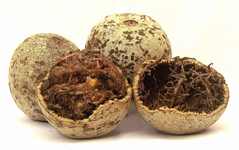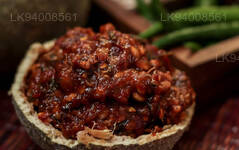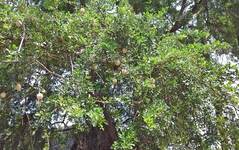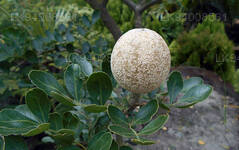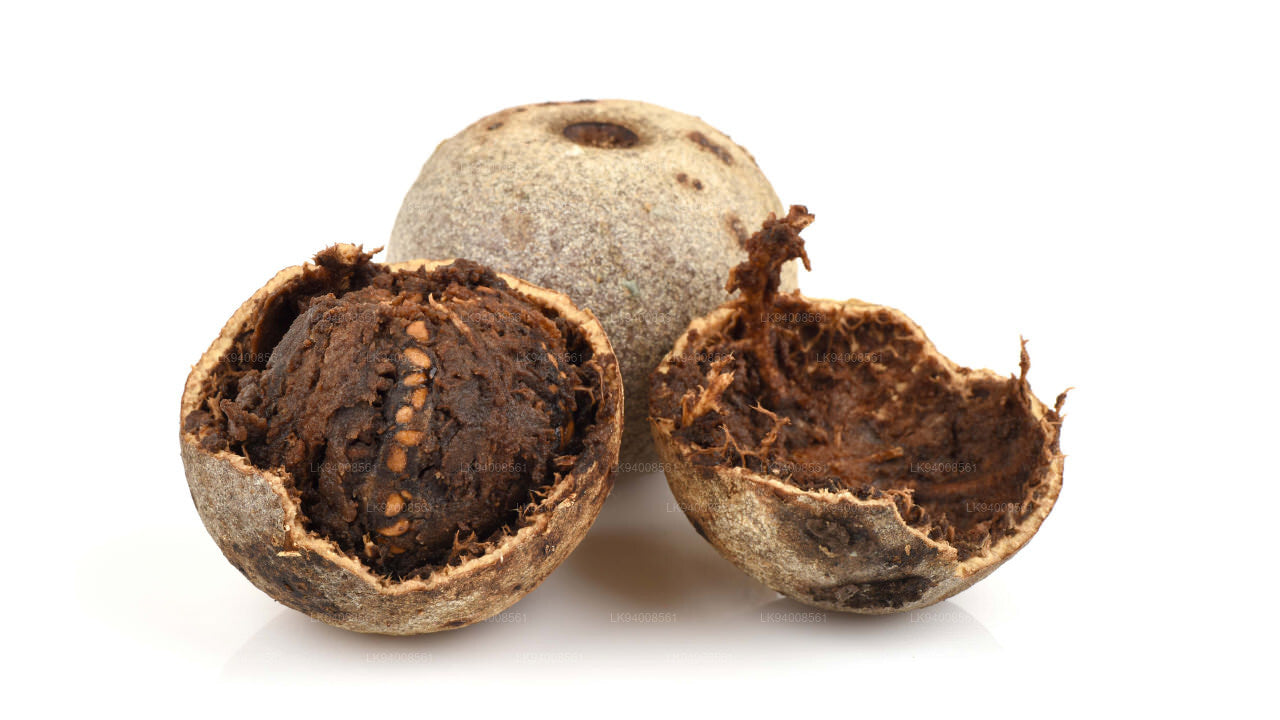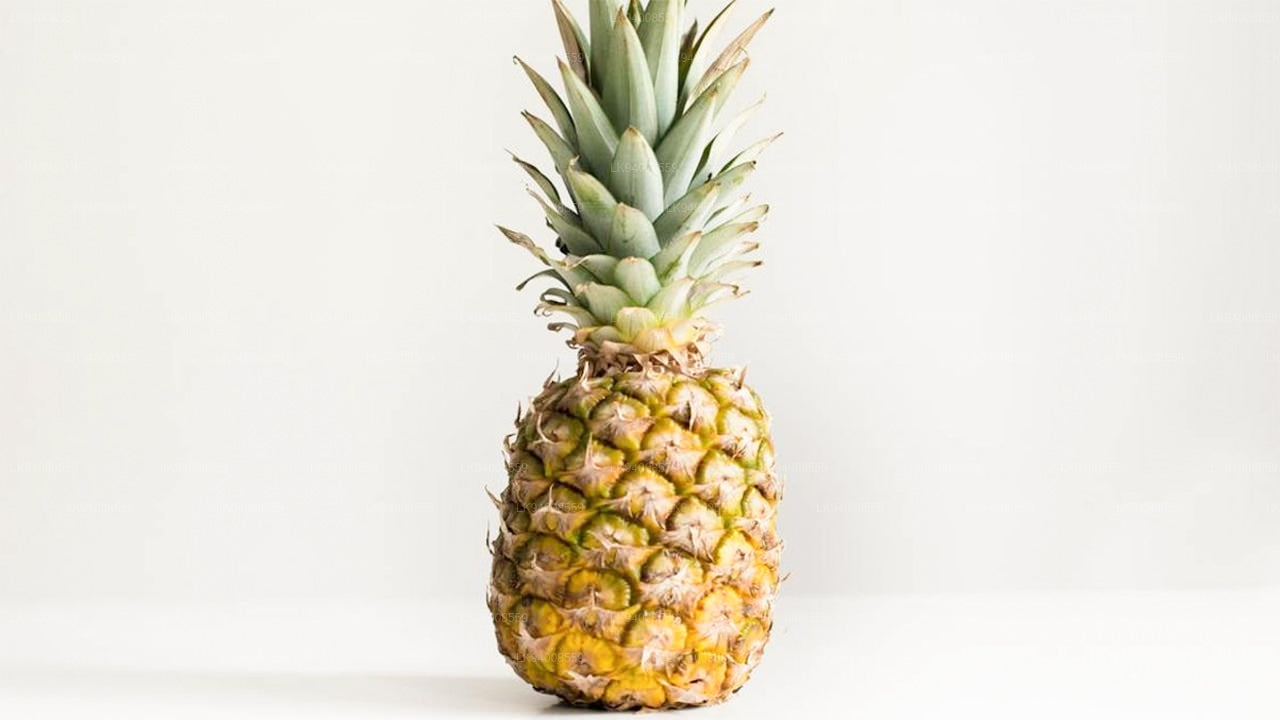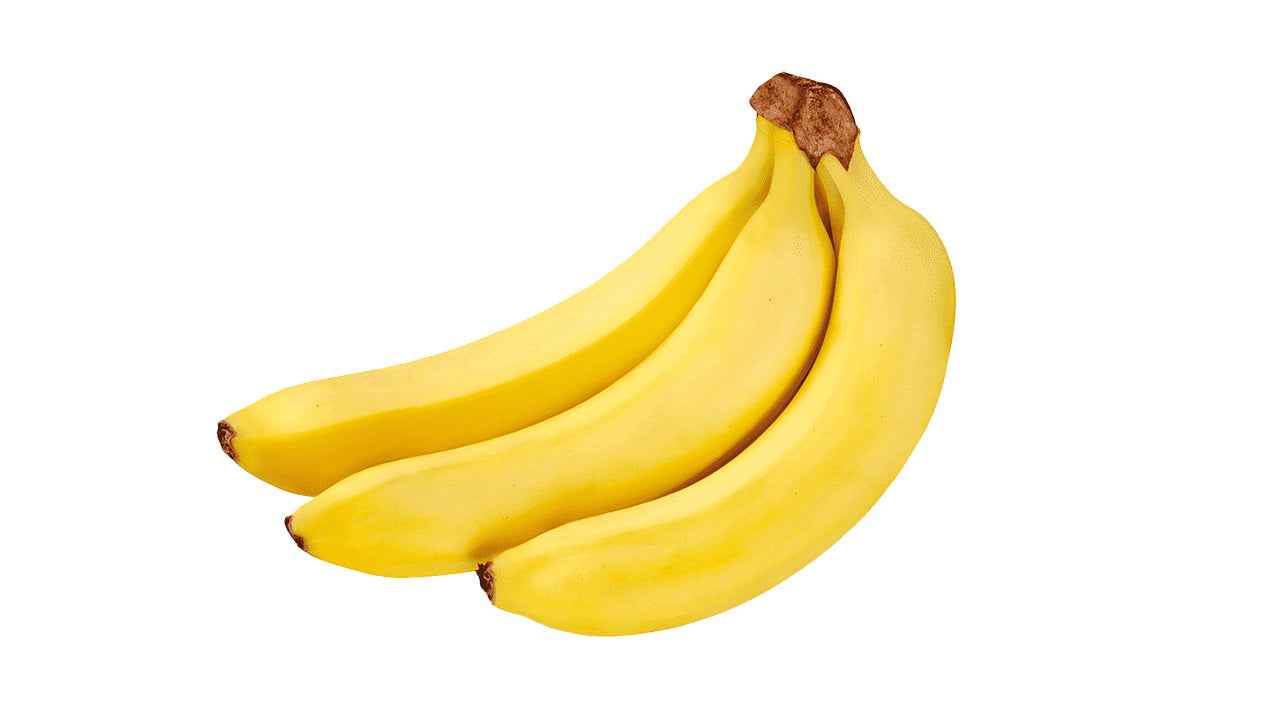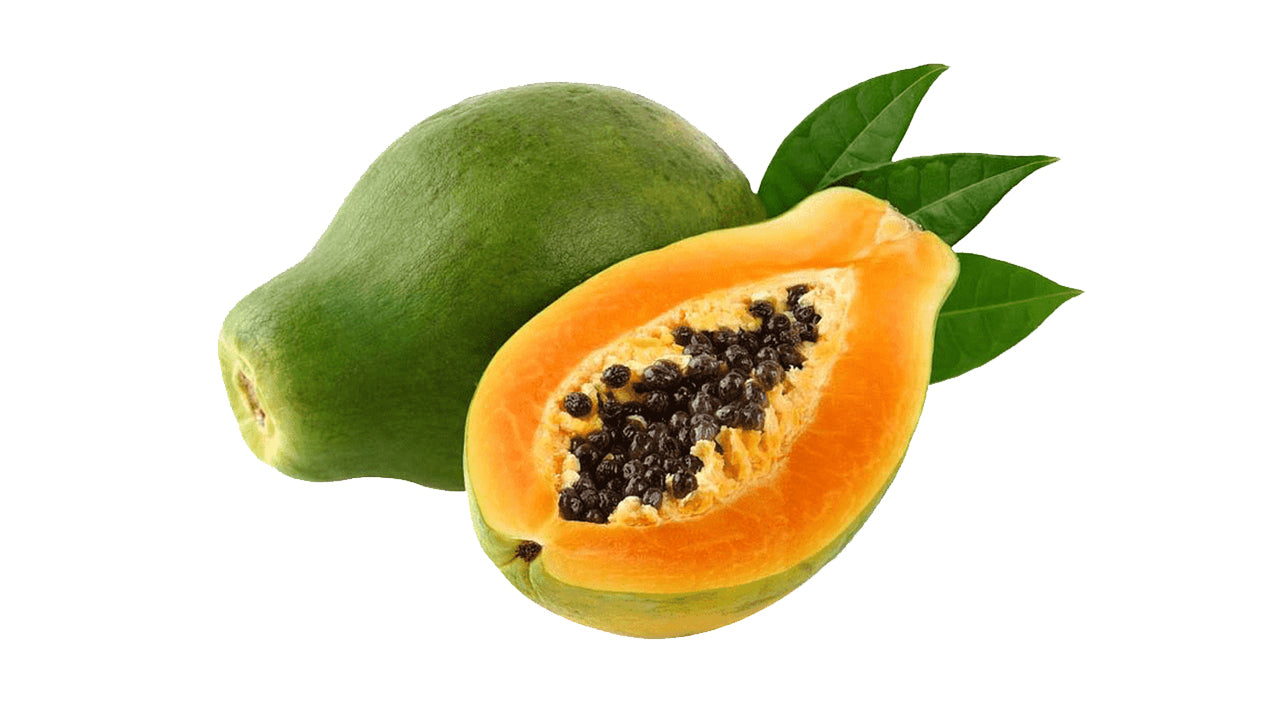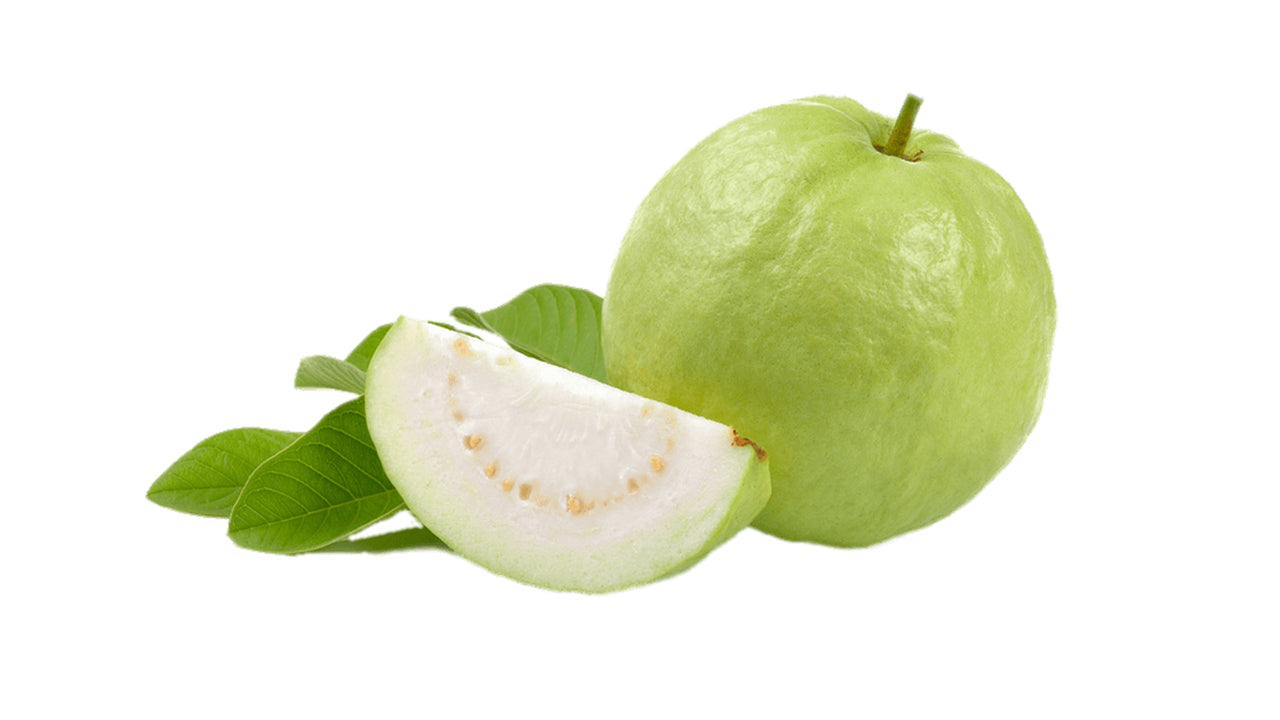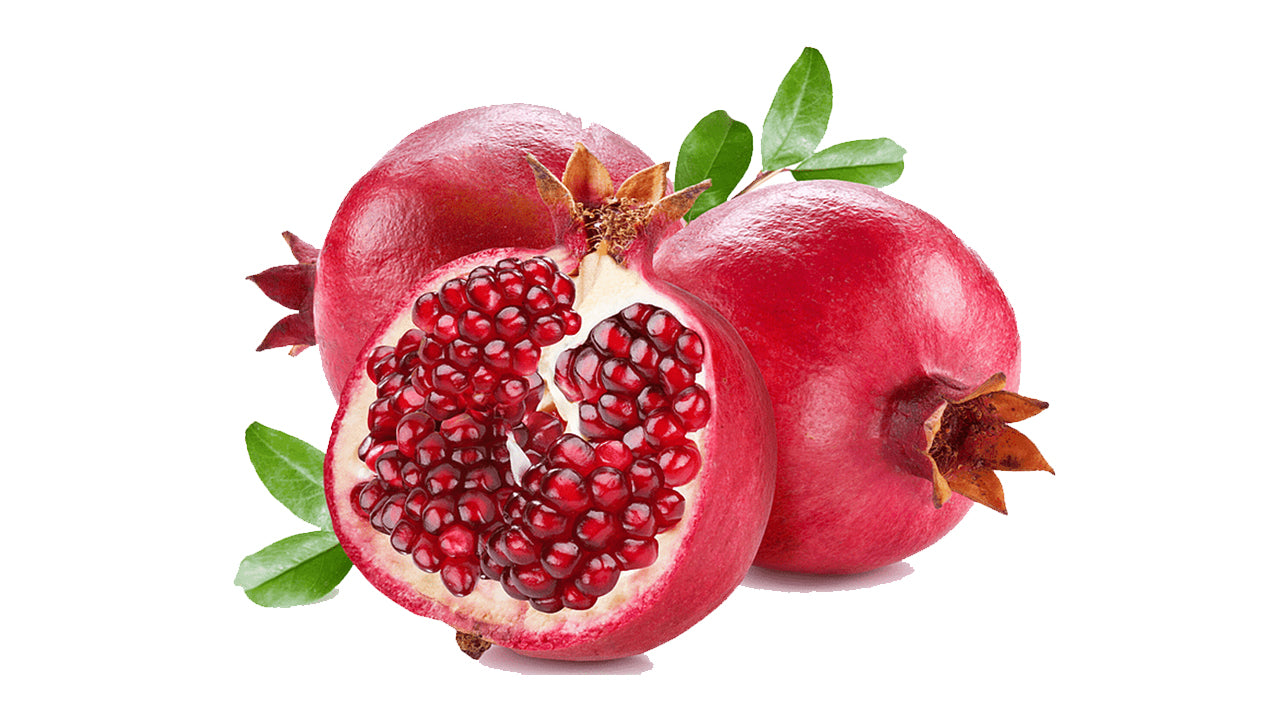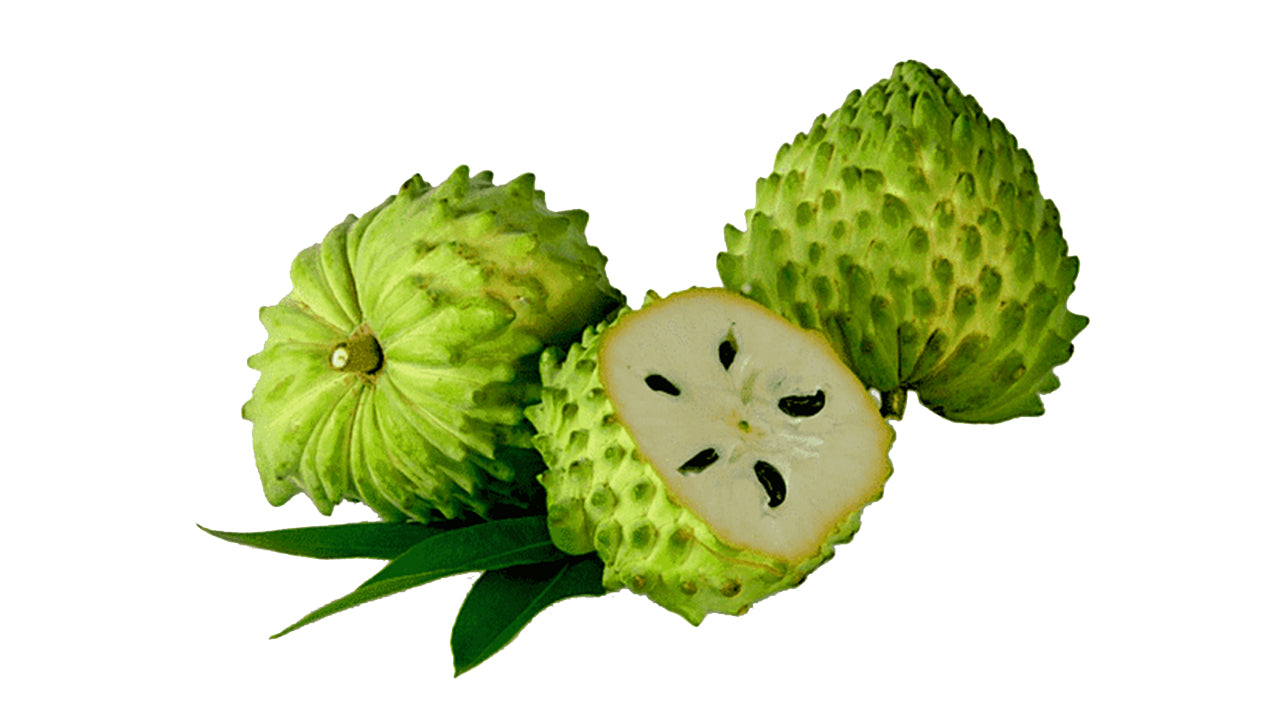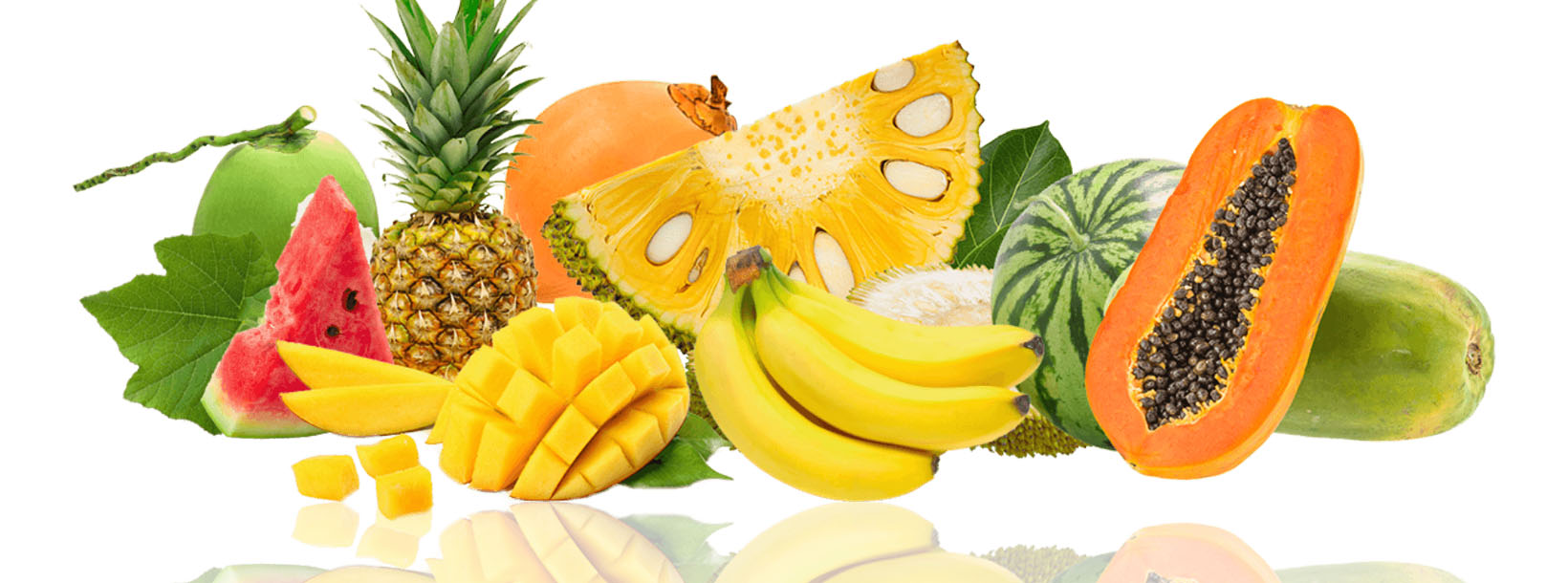
Fruits
Sri Lanka boasts a vibrant array of tropical fruits that reflect its rich agricultural heritage. Among the most beloved is the king coconut (thambili), cherished for its sweet, refreshing water, perfect for quenching thirst in the tropical heat.
Woodapple (දිවුල්)
The wood apple is a peculiar fruit - it looks like a rotten coconut on the outside, and on the inside, it doesn’t get any prettier. Nor does it smell right - many refer to as a sort of mixed stench of rotten blue cheese with overripe bananas. But much like the stinky durian, we know better not to judge a fruit by its odor.
The wood apple is actually a popular fruit in Indian and Sri Lankan cuisine, native to those areas and neighbouring Bangladesh and Andaman Islands. Botanically called limonia acidissima, and commonly referred to as the elephant apple, wood apple fruit grows on trees that reach up to nine meters tall, ranging between 5-9 cm when mature.
The hard, rough exterior is covered in sticky brown pulp and small white seeds, and once cracked open, exposes a soft, dark brown flesh that looks like banana pudding.
What does wood apple fruit taste like?
Wood apple pulp has a sour, funky taste that is delicious with a touch of sugar in desserts, or alternatively, with warm spices for savoury dishes. In Sri Lanka, locals make wood apple juice by adding sugar and coconut milk to the strained pulp. The resulting juice is tart, sweet and creamy, and is a refreshing street food option that's popular in the summertime.
Wood apple pulp is also used to make chutneys and jams, the latter made by cooking the pulp with sugar and spices such as cardamom. Try its tart-sweet flavour in desserts such as ice cream, or go at it like many of the locals do: taste it straight out of its hard shell by scooping out the pudding-like pulp with a spoon.

